Leonid Frantsevich and Stanislav Gorb
Courtship Dances in the Flies of the Genus Lispe (Diptera:
Muscidae): From the Fly's Viewpoint
Archives of Insect Biochemistry and Physiology 2006, 62:
26-42.
Abstract. Two predatory fly species, Lispe consanguinea
Loew, 1858 and L. tentaculata DeGeer, 1776, inhabit the supralittoral zone
at the shore of a fresh-water reservoir. Both species look alike and possess similar
.badges, reflective concave silvery scales on the face. Flies occupy different
lek habitats. Males of the first species patrol the bare wet sand on the beach
just above the surf. Males of the second species reside on the more textured heaps
of algae and stones. Courtship and aggressive behaviour of males was video-recorded
and analysed frame by frame. Visual stimuli provided by the conspecific partner
were computed in the body-fixed space of a fly observer. Males of L. consanguinea
perform long pedestrian dances of pendulating circular arcs (frequency 2 s-1,
median radius 2.5 cm, linear velocity 0.130 m/s). Right and left side runs are
equally probable. Circular runs are interrupted by standby intervals of average
duration 0.35 s. The female views the male as a target covering 2 by 2 ommatidia,
moving abruptly with the angular velocity over 200 °/s in a horizontal direction
down the path of about 50° till the next standpoint. Dancing is evenly distributed
around the female. On the contrary, the male fixates the image of the female within
the narrow front sector (median ±10°); the target in his view has 6.7 times less
angular velocity and angular span of oscillations, and its image in profile overlays
6.8 by 2 ommatidia. If the female walks, the male combines tracking with voluntary
circular dances. Rival males circle about one another at a distance shorter than
15 mm, but not in close contact. Males of L. tentaculata are capable of
similar circular courting dances, but do so rarely. Usually they try to mount
any partner immediately. In the latter species, male combat consists of fierce
wrestling. Flies of both species often walk sideward and observe the partner not
in front but at the side.
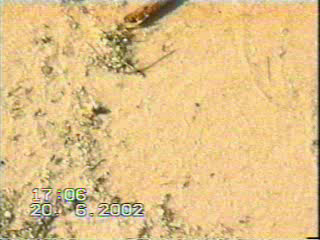
Round courtship dance in Lispe consanguinea
(click on the image to view the movie)
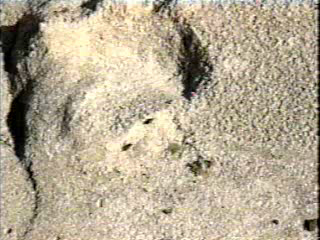
Chasing during courting in Lispe consanguinea
(click on the image to view the movie)
Egocentric view at the courtship mate
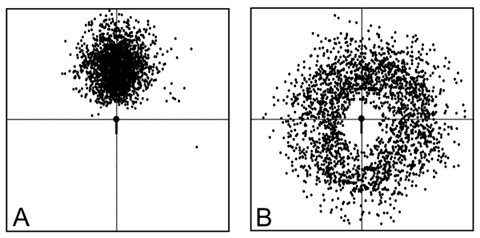
Position of the head of the mate relative to the
fly observer during the dancing arcs in Lispe consanguinea. A - a female
relative to the male; B - a male relative to the female. Area of the square is
100 by 100 mm. 2651 frames.
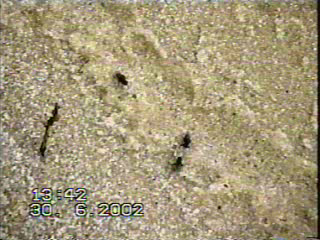
Encounter of rival males in Lispe consanguinea
(click on the image to view the movie)
Egocentric view at the rival male
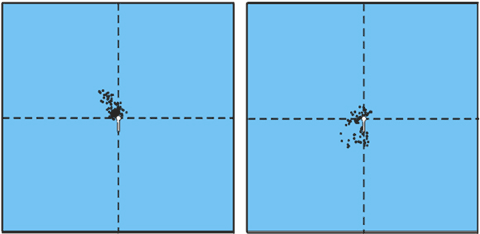
Position of the head of the mate relative to the
fly observer during the aggressive encounter between the males. The dominant male
in the left panel keeps the target in the front sector of the visual field, while
the chased fly in the right panel allows
the chaser to stay around. Area of the square is 100 x 100 mm. 154 frames.
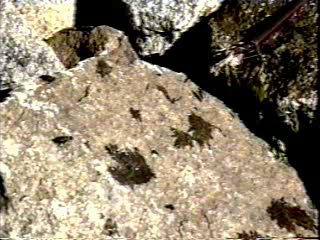
Encounter of rival males in Lispe tentaculata
(click on the image to view the movie)
Whereas males of L. consanguinea perform
head-to-head circling
at a distance about 15 mm, males of L. tentaculata use direct proboscis
contact
or wrestling.
|



